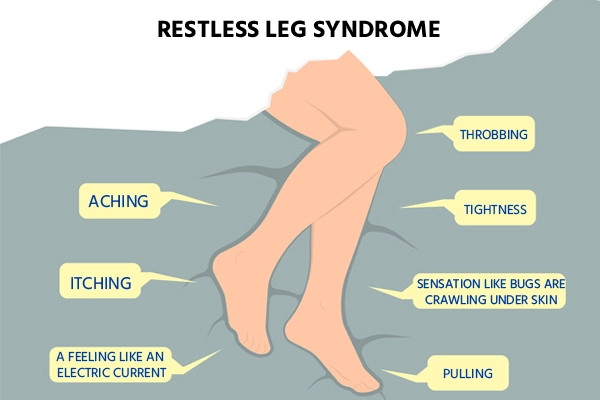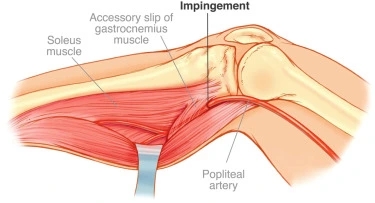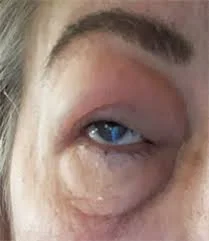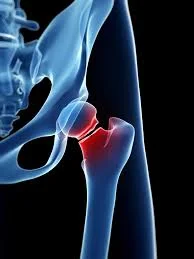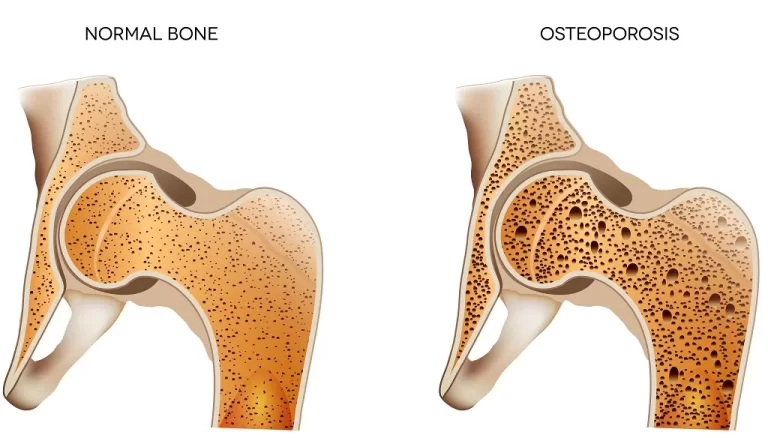Restless Legs Syndrome
Table of Contents
What is a Restless Legs Syndrome?
Restless Legs Syndrome (RLS), also known as Willis-Ekbom Disease, is a neurological disorder characterized by uncomfortable sensations in the legs and an irresistible urge to move them.
Individuals with RLS often experience symptoms during periods of rest or inactivity, particularly in the evening and night, leading to difficulties in falling or staying asleep.
The sensations in the legs are often described as tingling, crawling, itching, or aching, and the need to move the legs provides temporary relief.
- Additionally, you can experience pulsing, itching, crawling, or throbbing. RLS cannot be cured, although there are treatments for it.
- Primary RLS, idiopathic RLS, Willis-Ekbom Disease, and other names for restless legs syndrome (RLS) are neurological disorders characterized by unpleasant or uncomfortable sensations in the legs and an overwhelming urge to move them. The symptoms usually start in the late afternoon or evening and get worse at night when you’re sleeping. It might be quite difficult to fall asleep or go back to sleep after waking up if you have RLS. Walking or moving the legs usually helps to ease the pain but as the action is stopped, the symptoms frequently return.
- RLS is classified as a movement disorder since its sufferers must move their legs to alleviate symptoms and as a sleep disorder because the condition is aggravated by resting and trying to fall asleep.
- RLS can start at any age and is thought to affect seven to ten percent of the population in the United States. Although it affects both equally, females are more likely to have it. The majority of severely affected people are middle-aged or older, and as people age, the symptoms usually get worse and occur more frequently.
- RLS often has no known cure and is a lifelong illness. Treatments are available, nevertheless, to lessen symptoms.
- A brain, nerve, and sleep disorder known as restless legs syndrome (RLS) results in an intense, almost overwhelming desire to move your legs, which is at least somewhat alleviated by doing so.
- Your body is more likely to experience symptoms in the evening when it is at rest. It usually occurs in conjunction with uncomfortable sensations in your legs, such as throbbing or hurting. It may be hard to relax or fall asleep if you have a constant inclination to move around. It may be hard to relax or fall asleep if you have a constant inclination to move around.
What are the types of Restless Legs Syndrome?
- RLS is a neurological, psychiatric, and sleep disorder. The following types of RLS are there:
- Early onset: The illness usually has a biological family history, is diagnosed before the age of 45, and advances gradually.
- Late onset: RLS develops faster and is diagnosed after 45 years of age.
How common is restless legs syndrome?
- In the US, 7% to 10% of people suffer from restless legs syndrome. White persons and those who were assigned female at birth
- (AFAB) are more likely to have it. As you age, your chance of developing it rises.
Symptoms and Causes:
- The symptoms and complications associated with restless legs syndrome.
- When you’re relaxing, you want to move your legs because of restless legs syndrome. It may interfere with your sleep and lead to issues.
Which symptoms of restless legs syndrome are present?
- The following are a few symptoms associated with restless legs syndrome:
- Your legs are giving you uncomfortable sensations that demand to be moved.
- When you sleep, your senses deteriorate.
- Moving your legs can provide some temporary (at least) relief from soreness.
- Jerky or twitchy legs in the evening and while you’re sleeping.
- Your sleep may be impacted by restless legs syndrome symptoms.
This can Cause:
- Sleep disturbances, trouble sleeping, or keeping asleep
- The impulse to roll over and stretch your legs in bed
- Fatigue or drowsiness during the day
- Alterations in behavior or mood
- Inability to focus, pay attention, or recall things
- Anxiety or depression
How does the syndrome of restless legs feel?
- You feel like moving your legs when you have restless legs syndrome. Though they can potentially impact your arms or your entire body, these sensations typically occur in your legs.
- You might feel the following feelings such as:
- Crawling
- Itching
- Aching
- Burning
- Throbbing
- Pulling
- Tugging
- Although they can occur on one side of the body, they typically impact both sides equally, such as both legs.
What factors are Restless Legs Syndrome?
- It’s uncertain what causes restless legs syndrome. It might have to do with how the basal ganglia, the area of your brain responsible for movement, work. Dopamine is used by the basal ganglia to control movement in the body. This area of your brain isn’t able to control your movement as well as it should if it doesn’t receive enough dopamine. RLS symptoms may result from this.
- According to research, the following could be a factor in Restless leg syndrome:
- Genetics: RLS is a genetic trait. An autosomal dominant genetic characteristic passed down from one of your biological parents after conception causes an RLS diagnosis.
- Iron deficiency: Even if your blood iron levels are normal, your brain may be low in iron.
Underlying medical condition: Secondary RLS refers to RLS that manifests in conjunction with another medical condition. - Medication: RLS can be brought on by or worsened by some medications, such as antihistamines, antidepressants, and antinausea drugs.
Which illnesses result in Restless Legs Syndrome?
- In addition to RLS, certain medical disorders can also occur, such as:
- Low levels of iron (iron deficiency)
- Anemia
- Pregnancy
- Diabetes
- Kidney disease
- Peripheral neuropathy
- Substance use disorder
What triggers the symptoms of restless legs?
- Things known as triggers exacerbate your symptoms of RLS. Though they could differ, potential triggers could be:
- Alcohol
- Caffeine
- Nicotine
- Certain medications
- Stress
- These triggers are more likely to exacerbate your symptoms if you encounter them or if you use or take them right before bed or rest. Furthermore, inadequate sleep can exacerbate existing problems. This implies that your symptoms may cause other symptoms to worsen. Speak with a healthcare professional if you need assistance determining what causes your symptoms.
What age group does restless legs syndrome affect?
- Anybody can get restless legs syndrome, including kids, teens, and adults. People over 50 are more likely to be affected. As you become older, your symptoms usually worsen.
Diagnosis and Tests
How is restless legs syndrome diagnosed?
- After examining you physically and going over your symptoms, a medical professional will diagnose RLS. A thorough medical history as well as a family medical history will be obtained during the examination.
- A neurological examination and blood tests may be recommended by a healthcare professional to rule out other illnesses or identify the source of your symptoms, as there is no test to diagnose RLS. For the purpose of assessing further potential sleep disorders, your provider might advise an overnight sleep study. However, sleep testing is not necessary for RLS because it is a clinical diagnosis.
- In order to verify an RLS diagnosis, a medical professional will search for the following indicators:
- You get the impulse to move your legs, which is typically accompanied by hurting or tugging pains.
- During periods of inactivity or rest, symptoms may start or intensify.
- When you stretch, walk, or work out the afflicted muscles, you experience either partial or complete alleviation.
- Your symptoms are worse, or they only happen at night or in the evening.
Your symptoms weren’t brought on by another illness.
Is it difficult to diagnose children with restless legs syndrome?
- Yes, it can be challenging for medical professionals to diagnose RLS in youngsters at times. This is due to the possibility that a youngster is unable to articulate their feelings or symptoms. RLS frequently mimics growing pains or attention-deficit/hyperactivity disorder (ADHD) in children.
Management and Treatment
How is restless legs syndrome treated?
- There are two alternative approaches to treat RLS and help with symptom relief: making changes to your regular routine at home or utilizing medication. Some people may see a decrease in symptoms if they work with their healthcare provider to manage other underlying medical issues. Your healthcare provider will go over the best plan of action for you as well as any possible side effects.
Restless legs syndrome medication
- Some drugs may be able to help you with your RLS symptoms. Your healthcare practitioner may prescribe any of the following medications:
- Iron supplements should be taken alongside vitamin C drugs that prevent seizures (pregabalin, gabapentin)
- Dopamine agonists: ropinirole and pramipexole drugs that function as dopamine precursors, such as levodopa
- If all other treatments fail, some drugs such as benzodiazepines (clonazepam), hypnotics (zolpidem), or opioids (methadone, buprenorphine) may be helpful in extreme situations. These drugs’ adverse effects have the potential to be dangerous and cause dependence
- A wide variety of iron supplements are available. The optimal type for you can be determined with the use of blood testing. An iron infusion may be beneficial if there is a suspicion that your brain’s iron levels are extremely low and your RLS symptoms are severe.
- Over time, drugs that raise dopamine levels may exacerbate the symptoms of RLS (augmentation). Vigilant observation is necessary.
Physiotherapy Management of Restless Leg Syndrome
- Recent studies have demonstrated the efficacy of physiotherapy in reducing RLS symptoms.
- Several specialized exercise regimens yield effective effects, such as:
- Traction straight leg raise
- Reflexology
- Electrical stimulation
- Infrared therapy
- Stretching exercises, and workout regimens that include aerobic and strength training
Treatments for restless legs syndrome at home
- The following at-home therapies may be suggested by a healthcare professional if your RLS symptoms are modest and are preventing you from falling asleep with restless legs. These could consist of:
- Engaging in regular activity, such as walking, stationary biking, or aerobics. A few hours before going to bed, avoid doing any strenuous or heavy exercise.
- Establishing healthy sleeping habits, such as not using a computer, phone, or television while in bed. Insufficient sleep might exacerbate the symptoms of RLS.
- Placing a heating pad or cold compress on your legs and soaking them in a warm tub. These might ease your discomfort momentarily.
- Taking a general decrease in stress. Here’s where a mental health professional can come in handy.
- Avoid caffeine-containing foods and beverages right before bed.
What quickly relieves restless legs?
- While moving your legs can instantly provide a brief relief from restless legs, the symptoms usually return after you stop moving. You might also try stretching, moving around, or giving your legs a massage.
Prevention
Is it possible to prevent restless legs syndrome?
- The cause of restless legs syndrome is unknown. Treating any underlying medical concerns or avoiding triggers like alcohol and caffeine will help lower your chance of experiencing worsened symptoms.
FAQs
Although restless leg syndrome doesn’t shorten life, it can have an impact on general well-being. There are mild to severe symptoms. The effects of even minor symptoms can be profound in your life. Your symptoms can qualify as a “serious” medical condition, depending on how you define it.
RLS is no known cure, however, medication can help control your symptoms.
RLS’s etiology is yet uncertain. When RLS symptoms appear, you feel an overwhelming want to move the limb that is affected. There is no specific test to identify RLS, but your healthcare professional can diagnose it based on your symptoms, medical history, and physical examination.
occur occasionally during the day. Long periods of sitting or lying down can cause something to start or worsen. could go on for an hour or more. occur in the arms, feet, or upper legs occasionally as well.
In conclusion. Supplementing with magnesium and vitamin B6 can help RLS/WED sufferers sleep better and see a reduction in the severity of their symptoms.
References:
1. Professional, C. C. M. (n.d.). Restless Legs Syndrome. Cleveland Clinic. https://my.clevelandclinic.org/health/diseases/9497-restless-legs-syndrome
2. Physiotherapy for Restless Leg Syndrome. (n.d.). Physiopedia. https://www.physio-pedia.com/Physiotherapy_for_Restless_Leg_Syndrome

